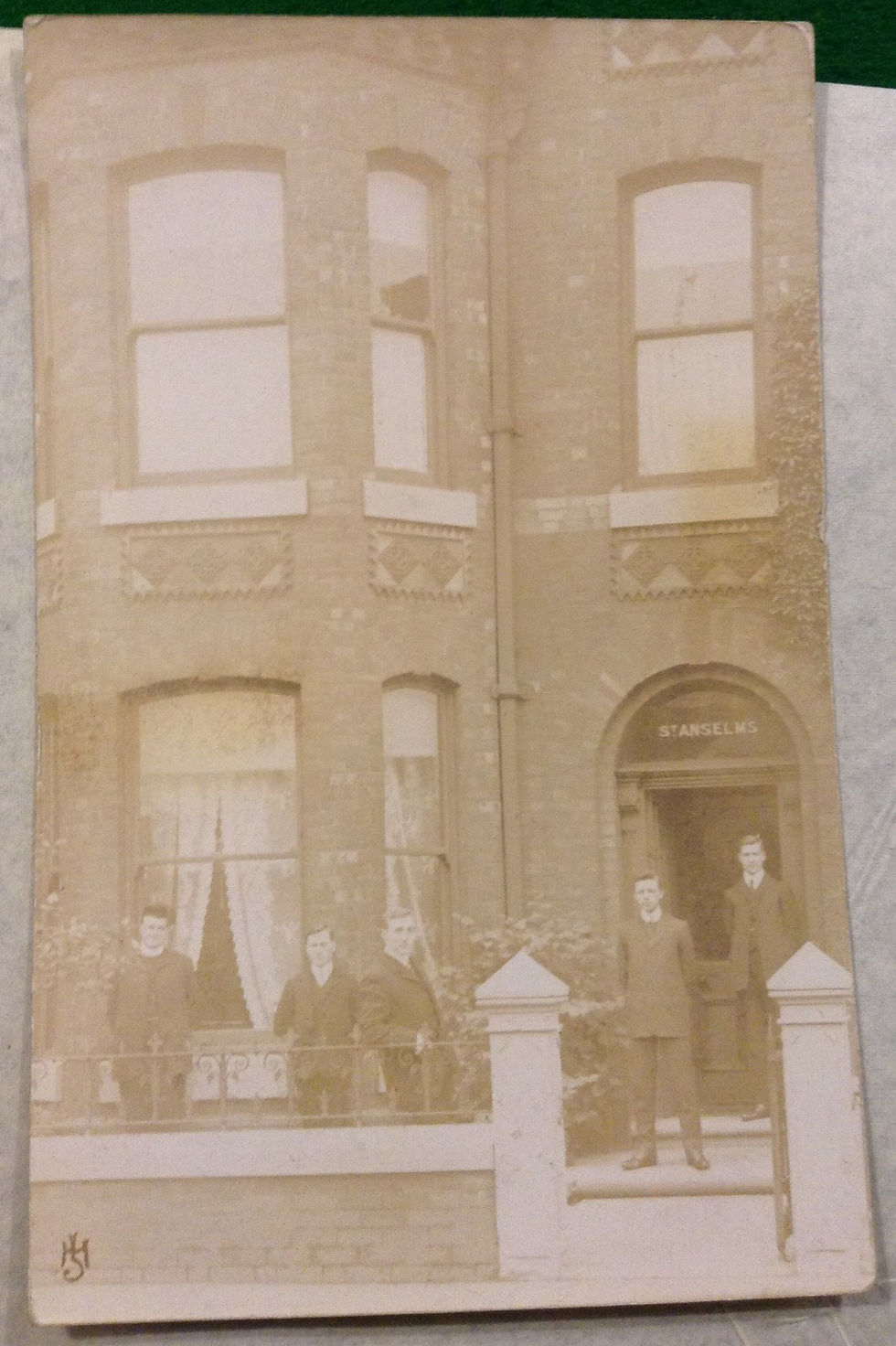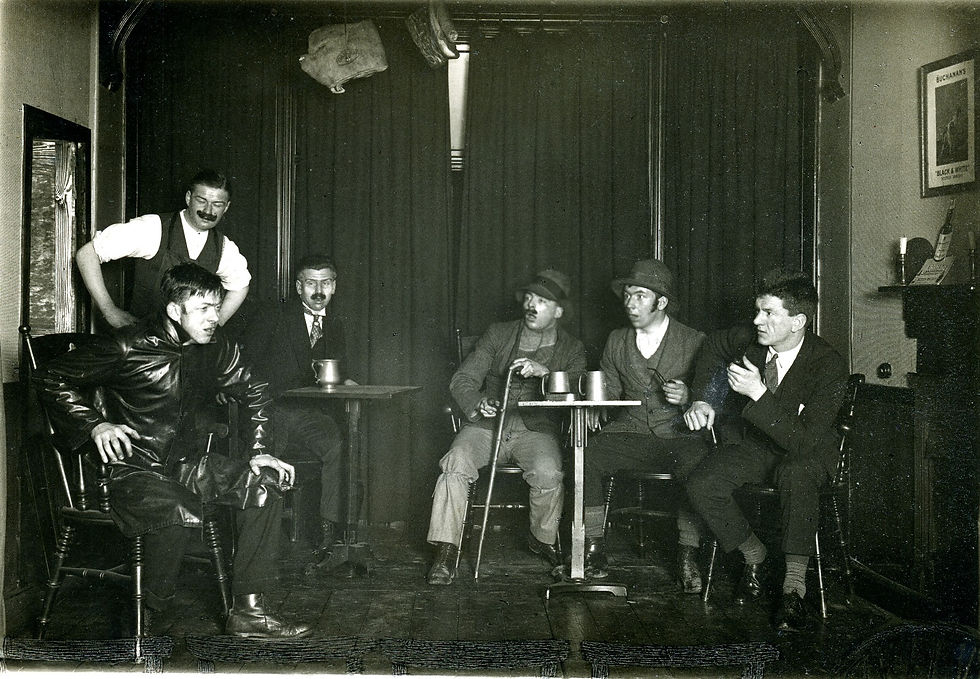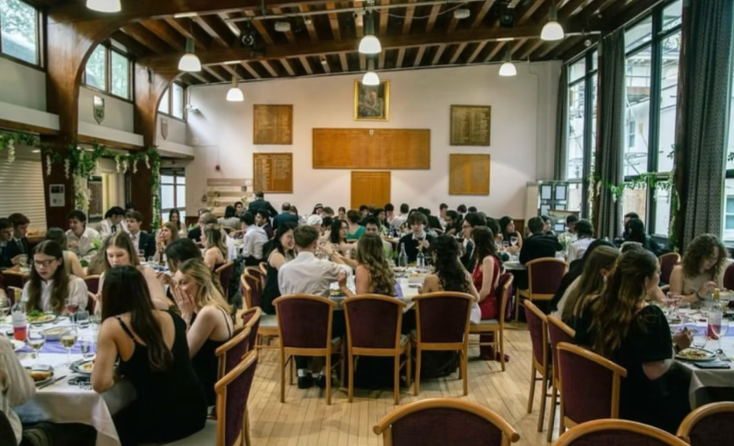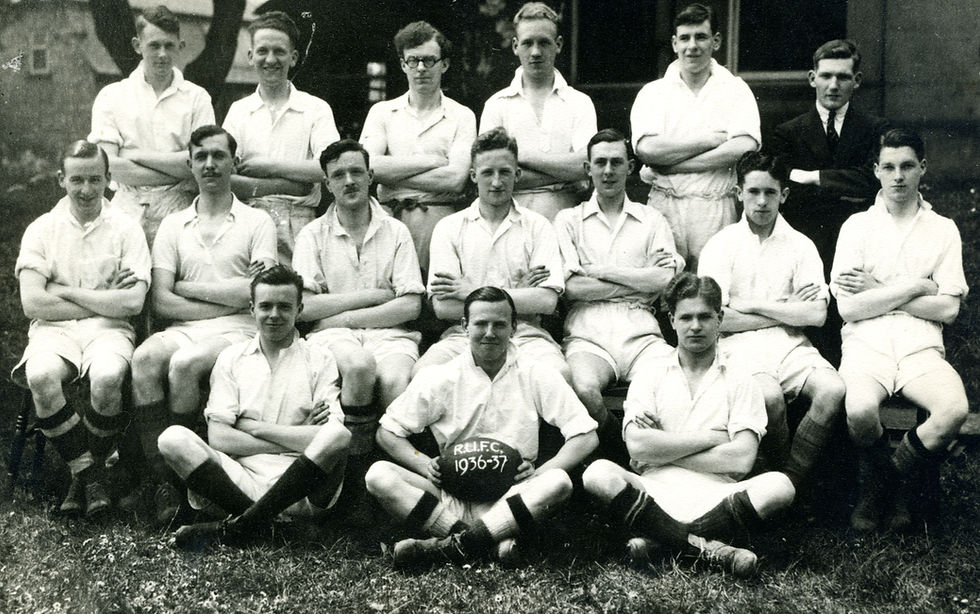Celebrating Slems: A Century of Community and Belonging at St Anselm Hall
- Krish Gupta
- Aug 1
- 7 min read
Updated: Oct 16
Written by: Krish Gupta (OA 2023-2026)
It didn’t take me long to start calling Slems home. From my first day here, I noticed all the signs that this place was much more than accommodation – it was a historic, ever-evolving community that had grown beautifully over more than a century! Ancient cobblestones line the entrance to the Hall through its main gates, and as soon as you step inside, you feel something unique about the place. Like its namesake, Slems has fought to preserve its tradition, often in the face of insurmountable odds—a testament to togetherness.
So where does this spirit of togetherness come from?
There is a city in Italy from which our Hall derives its name: Aosta, where Anselme was born nearly a thousand years ago. Anselme d’Aoste became a runaway monk and led a revolutionary life, with unique argument styles and undeniable brilliance. He would serve as the Archbishop of Canterbury, the principal leader of the Church of England.

Nine centuries later, in the midst of one of the world’s most industrialised cities, an Anglican training seminary for poor boys was opened in Newton Heath—a half-hour drive from the Hall’s present location. Reverend Thomas Allworthy, the founder of the Hall, had planted the seed: a tiny community, with the first ‘cohort’ being only four residents in the east of Manchester, far from Victoria Park. The Hall expanded twice before settling in for a hundred years—first to 134 Dickenson Road, and then finally to Kent Road, where a house formerly home to the renowned Professor Schuster (whom physics students might recognise from Schuster’s Integral) would form the first wing of the Hall. Dewar came next, a decade later, and two large Victorian villas named Manor and Summerfield came into the fray in the 1930s.
With each brick and beam, the Hall has grown into a mosaic of stories.
A wide-ranging student body mixed in Slems in the turbulent early 1900s. D.L. Deshpande, an Indian alumnus in the late 1920s, would go on to be the director of one of Independent India’s first engineering colleges. Two decades later, one of Manchester’s most renowned economists, Sir Arthur Lewis, was part of the Senior Common Room for St Anselm Hall. In 1979, he would go on to become the world’s first black recipient of a Nobel Prize in one of the sciences.
With such bright minds in and around the Hall, it was no surprise that the seed the first Reverend planted was blooming into a forest of ideas and a culture of its own. It’s here in the story that we first see how this accommodation played a part in building a university experience unlike anywhere else. The first Hall play was performed, featuring actors jumping through windows (in the true Slems spirit of innovation and defiance, of course)! A lot of what makes this Hall unique came from the intermingling of ideas and traditions from across England. For example, an Oxford alumnus, the Warden Duncan Armytage, instituted a formal dinner in 1928. How many friendships have sprung and become stronger as a result of this tradition alone?

Time did not come without its challenges.
The Second World War’s destructive toll nearly threatened to shut down St Anselm Hall for good. Reverend Joe Inglis kept the Hall open through the war, turning the cellar into an air raid shelter, making necessary changes where needed, to ensure the survival of the Hall. Many alumni were called up for service in this period, and many were martyred in the wars across the world. Be it in Gallipoli or France, bravehearts rose from this Hall to fight for their country. This was a grim time for the Hall; however, there is a sense of solidarity and pride in the simple fact that it persevered. The eponymous Saint would be proud of the 23 young martyrs and all those who served a greater good.
As the smoke settled and a new post-war world dawned, signs of life crept back into Manchester and the Hall.
Thanks to the determined efforts of the then-Warden Ronald Preston and two Slems alumni, Thomas Lawrenson and Lawrence Tremlett, traditions including the formal dinner and the alumni association persisted. The Hall mended its wings as the Manor and Summerfield wings were rebuilt after the houses bought a few decades back fell into disrepair. The building started looking like how it looks now. History left its mark around Slems, as Manchester recovered from the war and grey smog became a common occurrence, disruptive enough to cause buses to stop.
If you ever get the chance to explore, you’ll realise history left its mark inside the Hall too – perhaps right next to your room! Old dining halls, closed-off rooms, unfinished buildings, and trees that have surely been here for over a century. Every single inch holds a story that is larger than life. The candles in the chapel are a memorial to a student’s tragic passing. There are scribblings made decades ago in the buildings that you can find and adore, an ancient graffiti at a museum.
The vibrant decades that followed only added more colour.
A young and dynamic community made these artefact-like settings a home in the Swinging Sixties, which saw a very dominant Manchester United side, the rise of the Beatles, and several cultural milestones. It was still a very traditional Hall, as our esteemed alumnus Mr Rick Holt recounts, and it would surprise some of the readers to know that there used to be brochures you needed to fill out and interviews that needed to be held by the Warden to see if you were deemed fit to join St Anselm Hall!
It was a prestigious institution by this time, with many active societies and sporting teams. The Hall play was, after its revival, as vibrant as ever. Mr Holt recounts his role in a student production of ‘A Man for All Seasons’ as the Duke of Norfolk, which was reviewed positively by the Manchester Evening News! Social mobility was on the rise, and a vibrant culture pervaded student life.
Picture a food syndicate operating out of Summerfield Wing in 1955, diving right under the Warden’s radar to smuggle in ‘contraband’. Now picture a crowd of college students in 1983, with funky haircuts and all, circling a small bowl to pay their respects to Arthur, one of the Hall’s rare aquatic and gilled residents. Students sneaking out to the nearby Dalton Ellis and committing mild acts of friendly rivalry. These stories add colour to the Hall’s long and winding tale, as we enter the modern era, filled with yet more challenges.
The later decades brought more change and evolution. The Cellar Club, still fondly regarded today, was founded during this period, giving students a space to wind down and connect. In 2017, Mr Rick Holt and the then-Warden Dr Ben Walker oversaw the Hall opening its doors to female students for the first time.
Even COVID-19 couldn’t dampen the spirit of Slems.
When the Hall was temporarily closed in 2020, the community found ways to survive beyond its walls. Through in-person chapel services, charity events, and a lively Facebook group, the "Slems in Exile" movement kept the heart of the Hall beating. That same year, students raised money for a domestic abuse charity and contributed to chapel restoration efforts.
The message was clear: while bricks and mortar may define a building, it is the people and their values that define a home. This is why archivists like Ms Isabelle Sumner (who has most graciously provided me with immense support throughout the making of this article) strive so hard to preserve the history of St Anselm’s Hall through projects such as Slems Archive and curating the Slems website.
Traditions like communal dinner continue to stand as proud symbols of what makes Slems unique, with the deliberate efforts of JCR members, in the spirit of the alumni who did the same. In a time when student accommodation across the world often feels impersonal and transactional, St Anselm Hall insists on being something more. The warmth of shared meals, the glow of chapel candles, and the late-night debates – these are the things that make Slems what it is.
“Over the years that followed in my career, both with the RAF and later with the American corporation, Lockheed Martin, those social skills proved to be vital. My time as a member there wasn't just great fun and gave me some life-long friends, but also formative and provided a solid foundation for my career afterwards, " recounts Mr Rick Holt.

In September of 2020, the Hall community was told that Slems would be closing in light of the COVID pandemic. A petition was signed, with alumni from far and wide pitching in with the hashtag #saveslems. Five years later, at the time of writing this article, the Hall is hosting its annual Spring Ball, lively as ever, unshaken by the advent of time.
Perhaps that’s why it has been so easy to call this place home over the years. It’s not because of any one tradition, but because of the fierce love with which every tradition is kept alive, in its own unique, ever-evolving way. That love is what makes a community more than just a group of people – it makes it a family.
And so, as the years continue to unfold and new students walk the same paths worn by a century of poets, philosophers, scientists, and scholars, one thing is certain: St Anselm Hall will keep blooming. Not just to exist, but to flourish with dignity, purpose, and warmth, as it has done for a century.










Comments